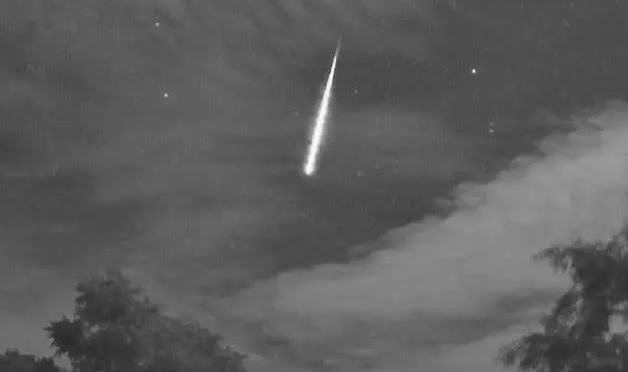Australian Fireball Mystery Solved: Russian Rocket!
12th Aug 2023
Residents of Melbourne, Australia, were treated to a spectacular scene after they spotted a blazing trail of lights streaking through the night. Many thought it might have been a meteor or some space debris. The Australian fireball passed over Melbourne just after midnight, burning brightly for a minute before breaking up into pieces and hitting the ground with a sonic boom, as many of those close-by heard.
But after much conjecture, it was revealed that a Russian rocket is the cause of the fireball and sonic boom that rattled homes across Victoria. The Australian Space agency further confirmed these sentiments in a post shared on X (formerly Twitter), saying, “We have determined the flashes of light seen across Melbourne skies overnight were likely the remnants of a Russian Soyuz-2 rocket re-entering the Earth’s atmosphere.”
According to the statement, Russian authorities had given advance notice of the launch and that “remnants of the rocket were planned to safely re-enter the atmosphere into the ocean off the southeast coast of Tasmania.”
Russian Soyuz-2 Rocket Launch
Russian authorities confirmed the launch of the Soyuz-2 rocket from Plesetsk Cosmodrome, placing the new generation ‘GLONASS-K2’ global navigation satellite into orbit.
According to astrophysicist and satellite tracker Jonathan McDowell, the space junk was the third stage of the Soyuz rocket. And it hadn’t been up there for long as the mission had lifted off at 9:20 a.m EDT (13:20 GMT) on Monday and re-entered the Earth’s atmosphere Southeast of Tasmania at around 10 a.m EDT (14:00 GMT; midnight Melbourne time).
In another social media post, McDowell established that the crashing rocket body was not Fregat, Soyuz’s uppermost stage, and that the Glonass satellite’s vehicle had proceeded towards its intended orbit. He further claimed that the fallen body was the Soyuz’s second stage, which the Russian space officials count as its first stage.
Allan Duffy, a professor in astrophysics at Australia’s Swinburne University of Technology, tweeted, “The Melbourne meteor was spectacular….and we have some unexpected space junk to thank for it!”
According to his tweet, the colors produced as the remnant whizzed through Melbourne’s skyline indicated that the objects were man-made and that the pieces of the space junk were burning up.
Sharing his statement, Associate Professor Micheal Brown from the Schools of Physics and Astronomy at Monash University said that the Australian fireball was unlikely for space junk to damage property. “Space junk re-entries are sometimes confused with meteors, which are also spectacular but usually far shorter events as they slam into the atmosphere at over 10 kilometres per second,” Brown said.
Space Debris
The European Space Agency estimates that there are about 36 500 pieces of space debris as of 6th June orbiting around the Earth from decades of space launches. Since the first satellite, Sputnik 1, was sent into the Earth’s orbit in 1957 by the Soviets, more than 15,000 satellites have followed suit.
With increasing rates of rocket launches, this can only mean one thing, we will be seeing more space junk re-entries in the coming days. And while recent events like the one in Melbourne do not harm human lives, it will be best for space agencies to develop new satellite observation methods.
Being aware of approaching space junk and being able to predict the paths of orbiting objects will help us better anticipate the movement of things that have the potential to harm the technology we rely on.






Thank you for your comment! It will be visible on the site after moderation.